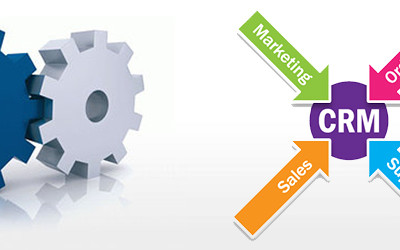
CRM Banking Requirement?
CRM in Banking
What is the need for CRM in banking and what is CRM in banking context is discussed in this section. The increased competition in the banking market, reduced customer loyalty, easiness in switching between banks for customers, and changing customer trends lead the banks to find a solution to attract and retain customers to increase their profit. In order to understand, manage, and serve the customer requirements, the role of CRM comes into existence. The CRM helps in delivering the consistent and cost-effective service to their customers, develop products and services aligned to customers, and increase customer loyalty and long term value of the customer (Russ 2006). According to Saravanakumar (2009), CRM is all about maintaining a sustainable competitive advantage by serving existing customers and attracting new customers.
Sign up to get FREE CRM Trial
In banking context, CRM is a system which has to deal with a large number of individual retail customers and has the analytical capability to manage the customer retention rates of the bank and to enable them to cross-sell their product effectively The CRM supports bank in executing data mining techniques to understand the customers, and also to identify the prospects for cross-selling their products. The CRM also reveals the best way to communicate and market their cross-selling products to the prospect customers. The banks also want operational CRM to reduce costs by transferring service into contact centers and online
CRM architecture is of three categories, collaborative, operational, and analytical. The collaborative CRM deals with the communication between bank and its clients, the operational CRM automates certain processes in banking, and the analytical CRM analyze the customer information and generates the business intelligence to operate in the competitive banking industry
Benefits of CRM
The implementation of CRM in banking sector generates benefits not only to banks but also to the customers.
According to Nelson (2012), the following are the prime benefits of CRM systems for the banks: improvement in customer service, value enabled cross-selling which in turn increase revenue, automation of banking processes, improved communication, better control on quality of customer details and product details, collection of customer data, effective surveys and marketing strategies. The CRM makes bank to focus on its customers to satisfy customer and make profits for the banks with the help of information and analysis tools of CRM. It increases the overall profitability of the bank like better infrastructure, easy training of employees, customer acquisition, retention, and profitability. The CRM increases the customer satisfaction which leads to the customer retentions. CRM helps the bank to achieve the centralization of information which helps the firm to manage and integrate process, people and technology. It helps the banks to understand the customers. CRM enables the bank to segregate the customers into various segments and helps them to customize the service based on various segments. It helps bank in creating demands through multi-channel and multi-wave campaigns which in turn resulted in aggressive customer acquisition. It provides the bank employees with 360 degree view about their customers, which means the transparent transactions through a single window. This 360 degree view acts as a framework to accelerate the cross-selling of different products to the customers (Bligh 2004, MBA Knowledge Base 2012).
The CRM increases the operational efficiencies and collaboration by automating the process and business activities which in turn reduces the process time and manual tasks. The multi lingual ability of CRM helps the bank to deal with the customers very easily. It also helped the bank in running campaign management and integrating the information about customers from various channel (Bligh 2004).
The implementation of CRM leads to the building of central repository for all products offered by the bank, pricing of its products, competitive information, internal training material, presentations for sales, templates for proposals and marketing collateral. This repository helps the bank to improve its efficiency. This also improves consistency and transparency in the organization by giving 360 degree view of the organization to all employees. The CRM helps in fast and consistent decision making based on the data in repository and customer understanding aspects of CRM. It helps the organization to manage the leads and opportunities into business through proper follow ups and interactions. The operational inefficiencies can be reduced with the help of CRM. It integrates customer interactions through phone, fax, e-mail, online portals, wireless devices, ATMs, and face to face contacts with bank employees at the operational centers and also connects to relevant internal and external partners. All the above information can be used with business intelligence systems to do predictive analysis (Bligh 2004).
The CRM in banking benefits customers by convenience banking like online banking, ATMs, mobile banking, etc. It helps the customer to give feedback and also helps them to know about more products which are beneficial to them (Bligh 2004).
CRM Strategy
The CRM strategy in banking is the direction and scope of the CRM initiatives of the bank over long-term to configure the CRM system in the challenging and competitive market to meet the needs of the market and stakeholders (Johnson 2006). In another way, the core of CRM strategy is the creation of mutual value to customers, employees, and banks itself (Chotani 2010). The aim of the bank in this challenging and competitive market is to attract and retain its customers through appropriate and personalized customer service. Based on the aforementioned aim, banks have the following three CRM strategies; acquiring, enhancing, and retaining the customers of the banks (Ramkelawon 2010). In acquiring strategy, CRM is used to make differentiation, innovation, and convenience in banking experience which may lead the banks to attract new customers.




